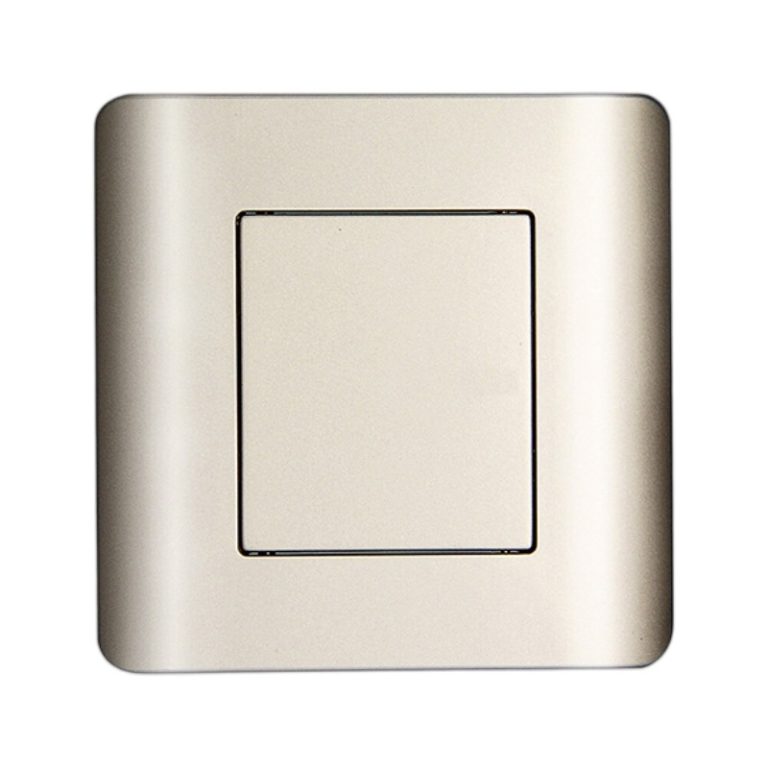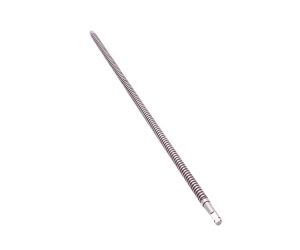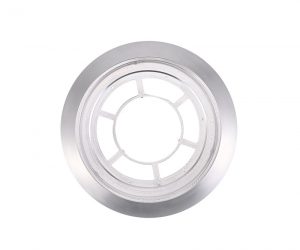Let’s dive into the fascinating realm of CNC precision machining, the sweet spot where cutting-edge tech meets top-notch craftsmanship. It’s all about crafting those ultra-precise parts that keep our modern industries humming along nicely. We’re talking about aerospace, automotive, medical – pretty much any field you can think of that demands the best. This is where high-tech processes, premium materials, and stringent quality checks come together to create components that are absolute game-changers across various sectors. So, if you’re curious about what goes on behind the scenes in these high-demand industries, this is your backstage pass!
I. The Algorithmic Crucible: Deconstructing CNC Precision Machining
A. Beyond the Binary: Defining CNC's Elusive Precision. Computer Numerical Control (CNC) precision machining transcends mere fabrication; it's a complex interplay of algorithmic precision and artisanal nuance. This sophisticated manufacturing paradigm marries the unwavering accuracy of computer-controlled machinery with the interpretive expertise of skilled engineers, yielding components of breathtaking intricacy. These components, ranging from the micro-mechanisms of life-saving medical devices to the robust structural elements of aerospace engineering, represent the unseen architecture of our technologically advanced world. The precision isn't merely a matter of tolerance; it's a manifestation of controlled chaos, a carefully orchestrated dance between the deterministic and the emergent.
B. The Imperative of Precision: A Contemporary Industrial Nexus. The relentless pursuit of miniaturization, heightened performance, and unwavering reliability has propelled CNC machining to the forefront of modern industry. Across diverse sectors – from the demanding aerospace and automotive realms to the increasingly intricate landscape of medical technology and microelectronics – the success of innovative products hinges upon the flawless execution of CNC-machined components. These components aren't merely functional; they are the critical path, the keystone upon which entire systems are built. Their failure represents not just a malfunction, but a systemic collapse, underscoring the profound importance of CNC machining in maintaining the intricate fabric of our technological civilization.
II. The Choreography of Control: Dissecting the CNC Machining Process
A. A Symphony of Algorithms: The Inner Workings of CNC Machines. At the heart of CNC machining lies a sophisticated orchestration of software, hardware, and human expertise. CNC machines, far from being mere tools, are sophisticated autonomous systems, executing complex algorithms to transform raw materials into precisely defined geometries. The seemingly simple act of removing material is, in reality, a tightly controlled sequence of movements, governed by intricate G-code and M-code instructions, which translate abstract designs into tangible reality. The precision isn't simply a matter of accuracy; it’s a demonstration of computational power harnessed to sculpt matter with unprecedented control.
B. A Paradigm Shift: CNC vs. Traditional Machining. The advent of CNC machining represents a paradigm shift in manufacturing, surpassing the limitations of traditional methods. While manual machining relies on the inherently variable skills of individual machinists, CNC machining offers unparalleled consistency and repeatability. This isn't merely a matter of increased efficiency; it's a fundamental change in the relationship between human agency and the manufacturing process. The precision achieved through CNC surpasses human capabilities, allowing for the creation of components with tolerances and geometries previously deemed impossible. This leap forward has not only increased productivity but has also unlocked entirely new possibilities in design and functionality.
III. Technological Frontiers: The Evolution of CNC Precision
A. The Algorithmic Rosetta Stone: Software and Programming in CNC Machining. The software underpinning CNC machining is not merely a set of instructions; it's a complex ecosystem of algorithms, data structures, and control systems. CAD/CAM software acts as the translator, converting abstract engineering designs into the precise, low-level commands that drive the CNC machine. This translation process is far from trivial; it involves complex mathematical calculations, collision avoidance algorithms, and optimization routines to ensure efficient and precise material removal. The programming languages themselves, such as G-code and M-code, represent a specialized form of communication between human intention and machine execution, underscoring the intellectual depth of this seemingly straightforward process.
B. The Unfolding Revolution: Advancements in CNC Machine Technology. The relentless pursuit of greater precision and efficiency has driven rapid advancements in CNC machine technology. The integration of advanced servo-motor systems, high-speed spindles, and multi-axis capabilities has expanded the possibilities of CNC machining exponentially. The development of new materials, such as advanced ceramics and composites, has further enhanced the durability, thermal stability, and precision of CNC machine components. These advancements are not merely incremental improvements; they represent a continuous evolution of the technology, pushing the boundaries of what's possible and reshaping the landscape of modern manufacturing. The future of CNC machining is not simply an extension of the present; it's a realm of unpredictable innovation, constantly challenging the limits of precision and control.
IV. The Material Conundrum: Precision's Precursor
A. A Panoply of Materials in CNC Machining's Crucible
The selection of materials within the high-stakes arena of CNC precision machining transcends mere material science; it's a strategic decision profoundly impacting the final component's quality, performance, and operational lifespan. The palette of choices is broad, encompassing a spectrum of metals – aluminum, stainless steel, titanium, and exotic alloys – each possessing unique metallurgical signatures that dictate their strength, corrosion resistance, and machinability. Beyond the metallic realm, high-performance engineering plastics, such as PEEK, PTFE, and POM, are increasingly favored, offering compelling alternatives characterized by cost-effectiveness and reduced weight. The ability to precisely manipulate these disparate materials, while adhering to exacting tolerances and achieving superior surface finishes, stands as a testament to the sophisticated capabilities of CNC precision machining. The inherent challenges – material anisotropy, potential for micro-cracking, and the unpredictable behavior of certain alloys under stress – necessitate a deep understanding of material science and advanced machining techniques.
B. Material Properties: A Symphony of Influences on Precision
The intrinsic properties of the chosen material exert a dominant influence on the attainable levels of precision and accuracy. Hardness, thermal conductivity, and dimensional stability are not merely parameters; they are the architects of the machining process itself. Softer metals, for example, exhibit a heightened susceptibility to deformation or catastrophic chipping during machining, while materials with substantial thermal expansion coefficients present formidable challenges in maintaining dimensional fidelity. Conversely, engineered materials boasting exceptional hardness, rigidity, and thermal resistance unlock the potential for producing components with tolerances measured in microns, exhibiting exceptionally smooth surface finishes, and possessing unparalleled dimensional integrity. The judicious selection and precise matching of material properties to the application's unique demands represent a critical juncture where the expertise of the CNC machining professional is paramount, ultimately optimizing the performance and reliability of the final components. Failure to account for subtle material variations can lead to catastrophic consequences, highlighting the critical nature of material selection in this field.
V. Quality Assurance: A Bastion Against Imperfection
A. Standards and Tolerances: The Unwavering Pursuit of Perfection
Precision is not merely a characteristic of CNC machining; it is its defining ethos. The industry operates under an unwavering commitment to quality, relentlessly pursuing the tightest possible tolerances, often measured in microns or even nanometers. These stringent engineering standards are not arbitrary; they are essential for ensuring the flawless fit, function, and performance of the final product, regardless of whether it's a critical aerospace component, a life-sustaining medical device, or a high-precision industrial part. The attainment and consistent maintenance of such exacting tolerances demand not only the advanced capabilities of state-of-the-art CNC machines but also the unwavering expertise and meticulous vigilance of highly skilled operators, metrology technicians, and quality control professionals. Any deviation from these standards can have far-reaching and potentially catastrophic consequences.
B. Inspection and Testing: A Rigorous Scrutiny
The assurance of quality and reliability extends far beyond the machining process itself. A comprehensive suite of inspection and testing procedures is implemented to validate compliance with industry standards and customer specifications. This rigorous regimen encompasses dimensional measurements, surface finish analyses, material testing, and functional evaluations, assessing factors such as dimensional accuracy, geometric tolerances, mechanical properties, and overall part integrity. Advanced metrology equipment, such as coordinate measuring machines (CMMs), optical scanners, and specialized gauges, are indispensable tools in this quality assurance process, providing the precise data and analysis needed to confirm the suitability of each component. Only after successfully navigating this rigorous quality control gauntlet can a part be deemed acceptable for its intended application. The slightest imperfection can be amplified in the final application, underscoring the importance of this meticulous process.
VI. Applications: A Tapestry of Precision
A. Aerospace and Automotive: Where Precision Meets Performance
The aerospace and automotive industries represent the vanguard of demand for high-precision machined components, as the safety, performance, and reliability of these critical systems are inextricably linked to the flawless execution of intricate parts. CNC precision machining is indispensable in the production of aircraft and spacecraft components, from complex engine parts and landing gear mechanisms to the delicate avionics that govern advanced flight capabilities. Similarly, in the automotive sector, CNC-machined parts are critical for high-performance engines, advanced suspension systems, and precision-engineered drivetrain components. The ability of CNC machining to consistently deliver parts meeting the most demanding specifications has cemented its role as an integral part of these industries' manufacturing processes. Failures in these applications can have devastating consequences, demanding the highest levels of precision and quality control.
B. Precision Engineering and Electronics: The Realm of the Intricate
Beyond transportation, CNC precision machining is equally vital in precision engineering and electronics. In the fabrication of specialized industrial equipment, scientific instruments, and advanced electronics, the need for meticulously crafted parts is paramount. CNC machining enables the creation of intricate gears, bearings, and housings that ensure the smooth and reliable operation of precision machinery, as well as the delicate components powering high-tech electronics, from medical imaging systems to advanced robotics. The dimensional accuracy, surface finish, and material properties achieved through CNC machining are crucial for the performance and longevity of these sophisticated products, underpinning technological advancements shaping our modern world. The tolerances required in these applications push the boundaries of current machining capabilities.
C. Medical and Diverse Industrial Applications: Expanding Horizons
The healthcare industry, with its unwavering focus on patient safety and innovative medical solutions, relies heavily on CNC precision machining. From specialized surgical instruments and prosthetic limbs to critical diagnostic equipment, CNC-machined parts enhance the capabilities and reliability of medical technologies. The ability to consistently produce biocompatible and sterile components while maintaining precision and functionality makes CNC machining indispensable. Furthermore, CNC precision parts find applications across numerous industrial sectors, including mold y tooling fabrication, high-performance sporting equipment, and custom part creation for specialized applications. The versatility and precision of CNC machining continue to expand its reach into new and challenging applications.
VII. Manufacturing and Supply Chain: A Labyrinthine Ecosystem
A. CNC Machining: Orchestrating Chaos into Precision
The production of CNC-machined components transcends mere manufacturing; it's a high-stakes ballet of advanced technologies, human expertise, and logistical choreography. Efficient workflows aren't merely desirable – they're existential. CNC machine shops must navigate a treacherous terrain of automated tool changers, pallet systems, and sophisticated process monitoring, constantly optimizing to minimize downtime, a single instance of which can cascade into catastrophic production delays. Lean manufacturing principles are not optional additions but fundamental survival mechanisms. Industry 4.0 technologies, including predictive maintenance and data analytics, are no longer futuristic fantasies but immediate necessities, enabling real-time adjustments and proactive mitigation of potential failures. The relentless pursuit of efficiency isn't simply about cost reduction; it's about mastering the intricate dance of supply and demand in a volatile global market. Failure to adapt means obsolescence.
B. Global Sourcing: A High-Stakes Game of International Chess
The globalized landscape of CNC machining presents a complex, multi-layered challenge. Manufacturers are no longer confined to local suppliers; their success hinges on navigating a labyrinthine network of international vendors, intricate logistics, and often conflicting regulatory environments. Strategic facility placement becomes a geopolitical calculation, balancing access to specialized materials, skilled labor pools, and favorable economic climates. Robust quality assurance protocols are not mere suggestions but critical safeguards against the inherent risks of geographically dispersed manufacturing. The rise of global sourcing platforms, while expanding reach and fostering international collaboration, also introduces new layers of complexity and potential vulnerabilities. The modern CNC manufacturer must be a master strategist, adept at risk mitigation, capable of anticipating and adapting to unforeseen disruptions in this ever-shifting global ecosystem.
VIII. Sustainability and the Future: A Crossroads of Ethics and Innovation
A. Environmental Responsibility: Beyond Compliance, Towards Leadership
The CNC machining industry faces an undeniable imperative: to reconcile its inherent energy intensity with the urgent need for sustainable practices. Energy-efficient machinery is no longer a luxury but a fundamental requirement. Advanced waste management systems are not optional add-ons but essential components of a responsible operation. Green manufacturing principles are not merely buzzwords but the foundation of a future-proof business model. The development of novel materials and machining methods that minimize resource depletion, drastically reduce emissions, and promote circularity is not just desirable; it's a strategic necessity. Companies that fail to embrace sustainability risk not only environmental repercussions but also the loss of market share to more ethically conscious competitors. The future of CNC machining is inextricably linked to its environmental stewardship.
B. Emerging Technologies: A Paradigm Shift in Precision Engineering
The future of CNC machining is not a linear progression but a radical transformation driven by converging technological advancements. Additive manufacturing, augmented reality, and the integration of AI and machine learning are not incremental improvements but disruptive forces poised to reshape the industry's very foundations. Multi-axis systems, hybrid manufacturing platforms, and advanced sensor networks are not isolated innovations but interconnected elements of a rapidly evolving ecosystem. These technologies promise unprecedented levels of customization, automation, and real-time optimization, blurring the lines between traditional CNC machining and entirely new manufacturing paradigms. The industry's ability to adapt and integrate these advancements will determine its continued success and its role in shaping the future of manufacturing.
IX. Conclusion: The Unsung Architect of Modern Innovation
CNC precision machining is the often-overlooked cornerstone of modern technological advancement. The seamless integration of sophisticated software, high-precision machinery, and skilled human expertise has established CNC machining as the gold standard for producing components that meet the most stringent specifications across diverse industries. Its importance continues to escalate, driven by ever-increasing demands for precision and complexity. The industry's unwavering commitment to quality, safety, and sustainability underscores its vital role in driving technological progress. The future holds the promise of even more transformative advancements, pushing the boundaries of customization, automation, and environmental responsibility. The CNC machining industry's capacity for adaptation and innovation will ultimately define its continued success and its enduring position as a critical pillar of modern manufacturing.
FAQs:
Q: What are the key advantages of CNC machining compared to traditional manual machining methods, and how have advancements in CNC technology enhanced the precision and capabilities of this manufacturing process?
A: CNC machining's core advantage lies in its inherent precision and repeatability, far surpassing the limitations of human dexterity. Computer control eliminates human error, ensuring consistent production of parts within incredibly tight tolerances. Advancements such as high-speed spindles, multi-axis capabilities, and automated tool changers have exponentially increased both the speed and complexity of what's achievable. This has not only improved dimensional accuracy and surface finish but has also unlocked the fabrication of previously impossible geometries and intricate features. The continuous evolution of CNC technology is a relentless pursuit of greater precision, pushing the boundaries of what's considered feasible and enabling manufacturers to meet the increasingly demanding requirements of modern industries.
Q: How do the materials used in CNC machining impact the achievable levels of precision, and what role do material properties play in the quality and performance of CNC-machined components?
A: Material selection is paramount in CNC machining, as material properties directly dictate achievable precision, surface finish, and overall component quality. Hardness, thermal conductivity, and dimensional stability are critical factors. Softer materials are prone to deformation, while materials with high thermal expansion coefficients present challenges in maintaining dimensional accuracy. Conversely, engineered materials with exceptional properties enable the creation of parts with tighter tolerances and superior dimensional integrity. The careful selection of materials, tailored to specific application needs, is crucial for optimizing component performance and ensuring adherence to the most stringent industry standards. The interplay between material science and CNC machining is a delicate dance, requiring a deep understanding of both disciplines to achieve optimal results.


